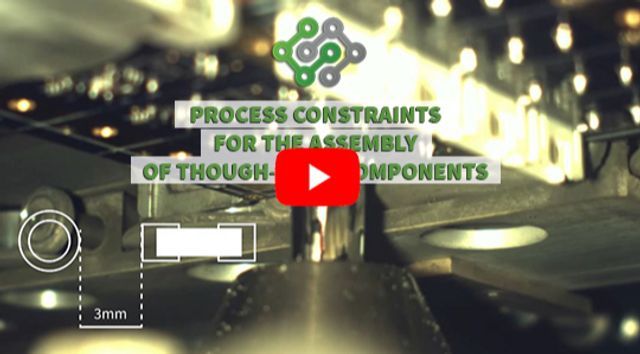6/26/2020

Good day all, today I am going to give you some tips on assembly of PCBs with through-hole components, so your board will be compatible with industry processes.
https://www.youtube.com/watch?v=ysX5sxhvE48
Selective wave soldering is a process of soldering through-hole components on the underside of the board. A nozzle moves under the board and deposits molten tin alloy directly on the pins of the through-hole components.
The advantages of this technique are :
- Faster soldering
- Better control and repeatability of the process
It is important that you follow the rule of keeping a minimum distance of 3mm between through-hole and SMD components. This distance is important because the nozzle that is used has a minimum size. For thermal reasons, if the nozzle is too small, the molten tin alloy may congeal at the end of the nozzle. Between the diameter of the smallest nozzle and the overflow of the molten tin you can expect a soldering diameter of 6mm.
For this reason, we impose a 3mm limit between SMD and through-hole components. If the components are closer together there is a risk that they will be caught by the molten wave. For a good solder joint thickness with selective wave or manual soldering, it’s important to use thermal relief pads in your design. Thermal relief avoids the dissipation of energy over the whole board and assists the rising of solder during the soldering process. Remember that the IPC Class 2 assembly standards require a rising of at least 50%.
We also advise not mounting through-hole components on both sides of the board unless mechanical reasons require it, because the process is more costly and there is a risk of collision between the nozzle and the components during the pass over the bottom side of the board. There is also a risk of overheating the through-hole components which are in proximity to the molten solder bath.
I hope these explanations will be useful for you in your next designs. We urge you to scrupulously observe these processing rules to keep the costs of assembly of your boards reasonable, because manual soldering of your boards is more expensive than automatic soldering. This will also avoid possible problems which may cause delays in the production of your boards.






